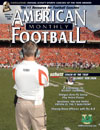AMERICAN FOOTBALL MONTHLY THE #1 RESOURCE FOR FOOTBALL COACHES
Article CategoriesAFM Magazine
|
7 Essentials to Kickoff Coverageby: Michael Parker© More from this issue While most people would agree that special teams can be a ‘difference maker,’ the University of Pittsburgh’s Charlie Partridge feels it is especially true of high school programs. “Great high school teams win two or three games a year, I promise you, just on special teams,” says Partridge. Special teams is all too often the stepchild in coaching clinics, behind offense and defense. But the man in charge of the kicking game at Pitt knows better. Like many coaches, Partridge preaches execution. But the difference between Partridge and many other special teams coaches is that he doesn’t just preach it; he actually makes his team practice it. Since becoming the coordinator at Pitt in 2006, Partridge has established the Panther special teams as one of the best groups in the Big East conference. Wh....The full article can only be seen by subscribers. Subscribe today!
|
|
|||||||
| HOME |
MAGAZINE |
SUBSCRIBE | ONLINE COLUMNISTS | COACHING VIDEOS |
Copyright 2025, AmericanFootballMonthly.com
All Rights Reserved





